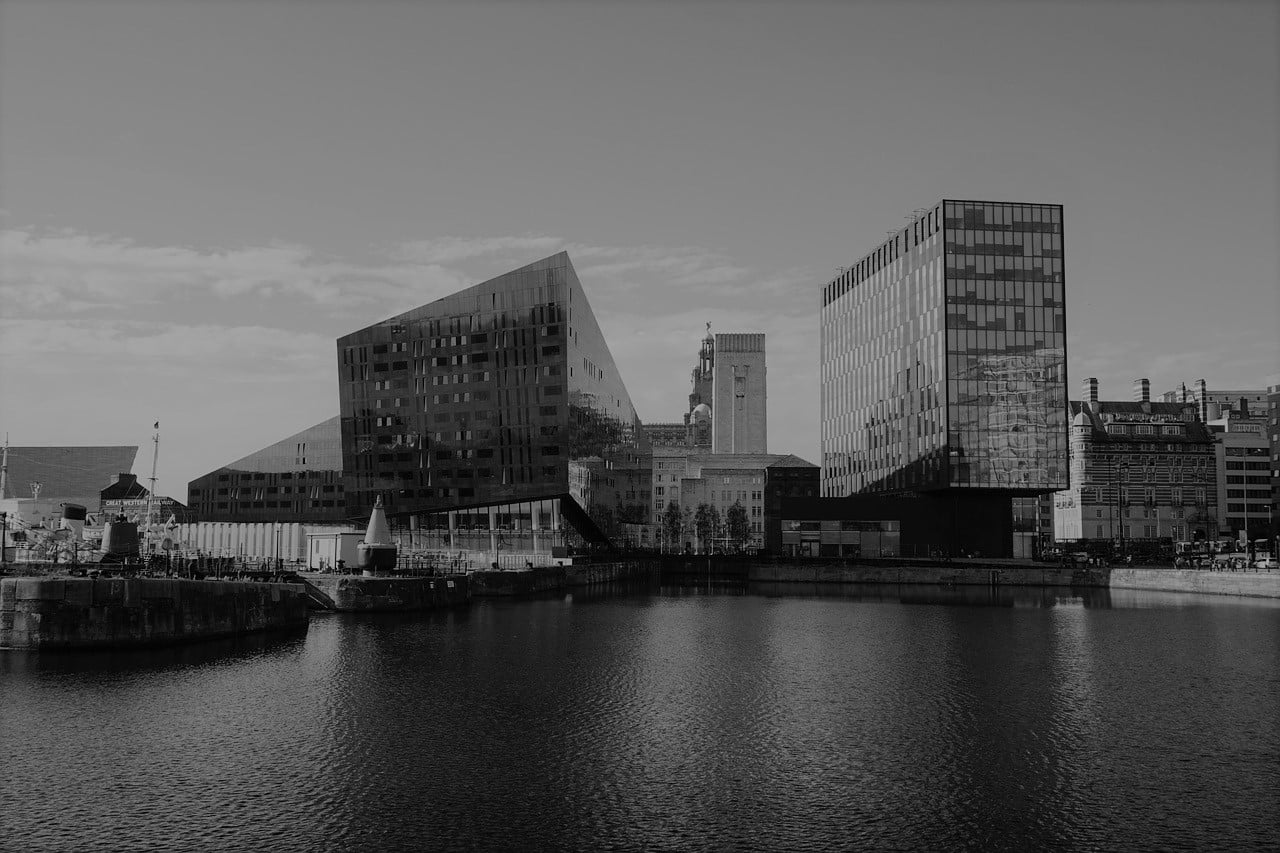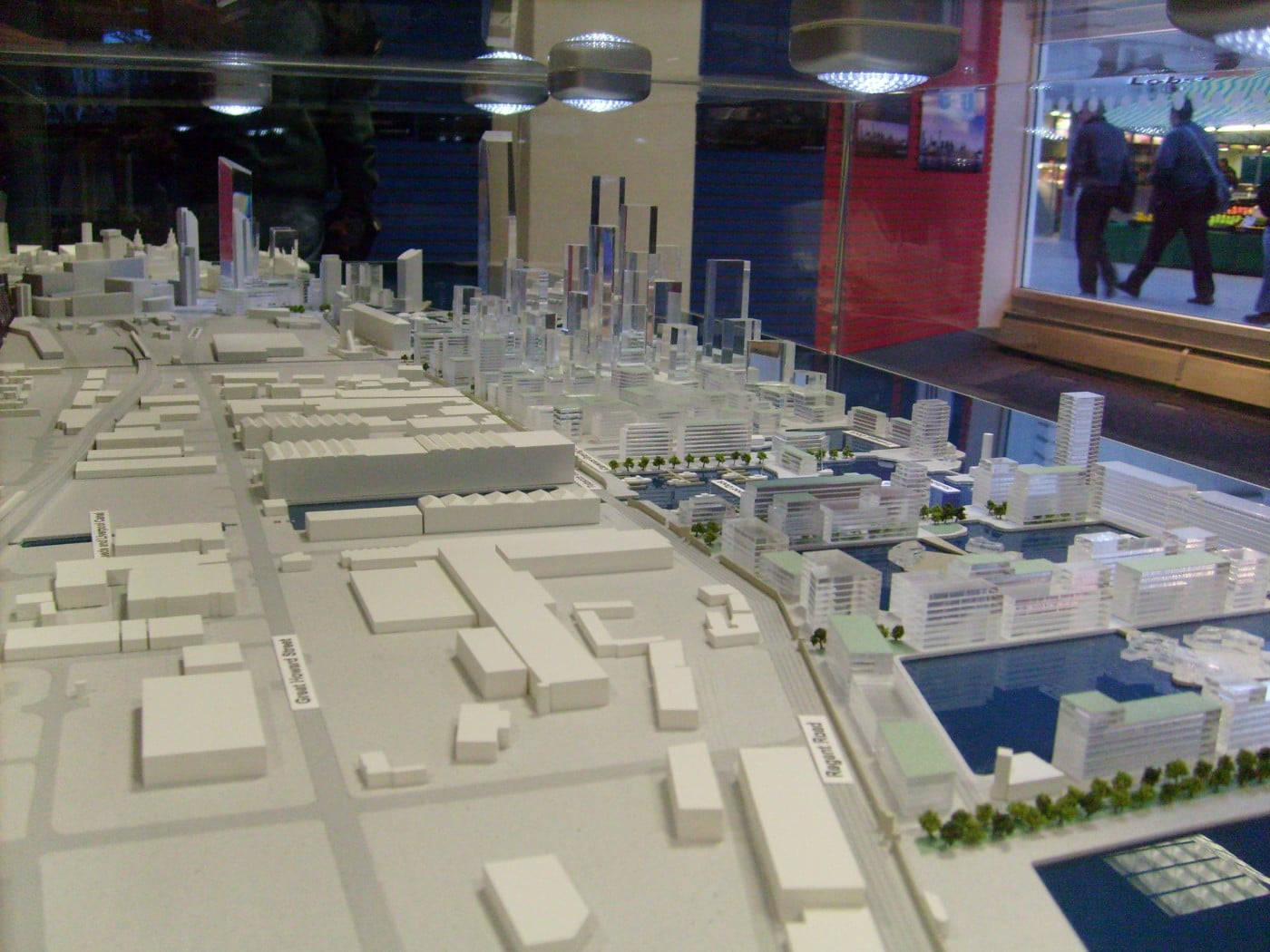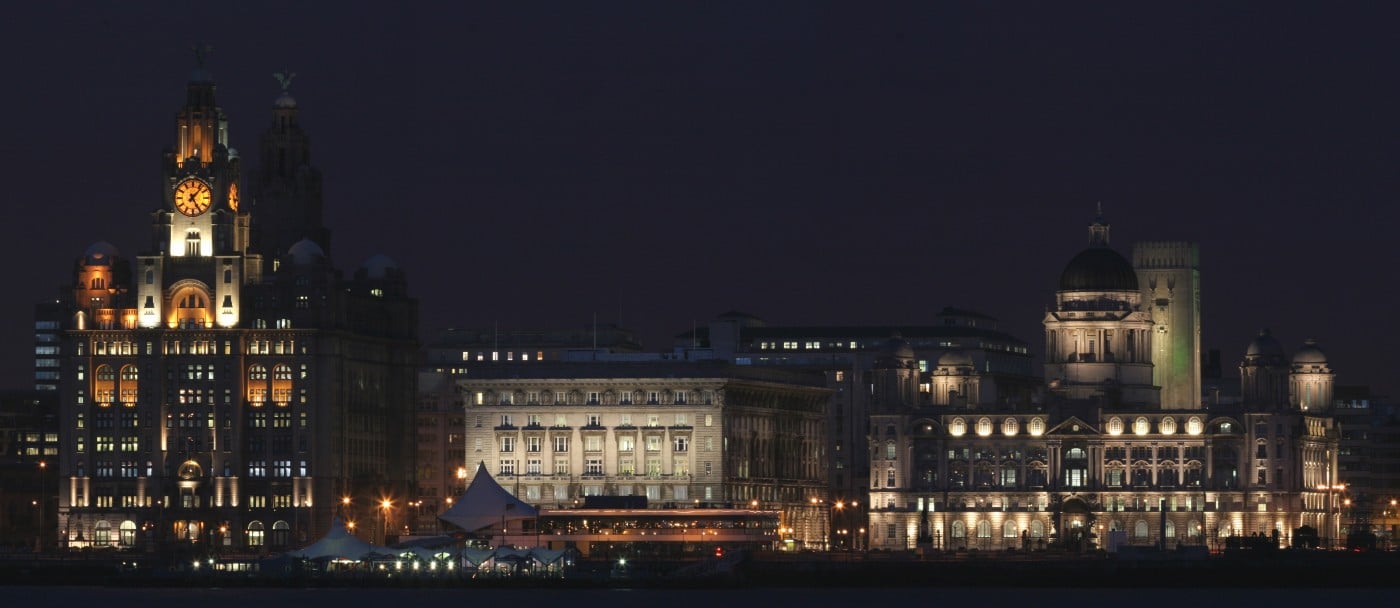
Fuck E**lish *erit*ge is the provocative title of Jonathan Meades’ 2004 riposte to the bien pensant attitude of English Heritage. Today in Liverpool a similar rebuke may be offered to UNESCO in the latest round of an ongoing conflict between the forces of conservation, heritage and preservation on the one hand, and developers and planners on the other.
In 2004 UNESCO, the United Nations cultural organisation ‘inscribed’ Liverpool onto their list of World Heritage Sites, a prestigious list of places which offer, ‘outstanding value to humanity’. In recognising that six zones within the city, ‘…bear witness to the development of one of the world’s major trading centres in the Eighteenth and Nineteenth Centuries’, UNESCO accorded Liverpool’s waterfront its ‘seal of approval’, deeming it worthy of World Heritage Status (WHS). However following the organisations decision to ‘inscribe’ Liverpool as a World Heritage Site on the ‘List of World Heritage in Danger’ in 2012, and more recently threats to strip Liverpool of its World Heritage Status (WHS) altogether, one is compelled to ask, what is the value of WHS? I’d like to consider not the supposed financial value of WHS, commonly expressed in X amount of pounds, (or the more emotive number of trained nurses), but rather the wider costs associated with seeking to ensure compliance with the whims of UNESCO.
UNESCO boldly claim that, ‘Heritage is our legacy from the past, what we live with today, and what we pass on to future generations’. This implies that we, the current generation, are mere custodians of a legacy, obliged to maintain it for a future which may not require, nor desire it. Ours is to ‘keep it safe, save it for later’, like the best room in the house, or a weird shrine to a departed loved one. We should treat this ‘legacy’ with an appropriate reverence and deference for a past which may not have had such limitations placed upon its own ambitions.
UNESCO’s ire was first awakened by Liverpool City Council’s approval of the Peel Group’s proposals for the Liverpool Waters scheme. UNESCO’s opprobrium was quickly seized upon by Save Britain’s Heritage, a campaign group. They refer to Liverpool City Council’s planning decisions concerning Liverpool Waters as, ‘crass’, potentially, ‘a hugely costly mistake’ and ‘an international embarrassment’. Exposure to such obloquy from such an organisation demonstrates the zeal of those who perceive development as a threat to the existing built environment. The standard narrative, often re-hashed as convenient copy by sections of the right wing media, is of a ‘treasured architectural gem’ being demolished in favour of a modern, (read hideously ugly), replacement. Often financed by a sinister ‘foreign’ investor, (read proto Bond villain), which will be simultaneously lauded by the architectural press and awarded the ‘Carbuncle Cup’. This paradox would be amusing if the outcome for our built environment was not so lamentable.

Such is the power of the preservation and heritage movement that we are compelled to overlook the needs of the here and now. Not that the developers of the proposed Liverpool Waters are themselves overly concerned with the present; the schemes as outlined and latterly amended, appear to favour speculative ‘re-generation’ schemes, which champion the worst type of ‘post-modern irony’, rather than addressing economic and social need in a coherent fashion. Nevertheless development is at the heart of what a city, particularly Liverpool, is founded upon, a city which embraces change within its uniquely, ever changing, urban landscape.
It is therefore perhaps prescient that the first exhibition at the recently opened RIBA North at Mann Island charts the astonishing architectural schemes proposed for Liverpool, ranging from the late Nineteenth Century plans for an Anglican Cathedral at St John’s, to Lutyens’ sublime Romanesque scheme for the Roman Catholic Cathedral, and Lasdun’s astonishing 1959 proposal for the Metropolitan Cathedral, which was based on a shallow enveloping curved concrete roof folded into deep furrows and ridges. The exhibition, entitled, ‘Liverpool, Mover, Shaker Architectural Risk Taker’, demonstrates that Liverpool tradition of not conforming to expectations, of seeing beyond the conventional and the safe, most especially in what is often considered the conservative world of ecclesiastical architecture. The exhibition also demonstrates the city’s ability to demonstrate faith and confidence in their architects: witness the young Giles Gilbert Scott’s vacillations over his Anglican Cathedral before he finally concluded with the monumental structure we see today.
Civic architecture is also included in the exhibition, notably Stirrat Johnson Marshall’s Processional Bridge across St James’ Cemetery 1931/2, Colin St John Wilson’s Proposed Civic Centre of 1967 and Will Alsop’s Cloud of 2002. Sadly whilst none of these schemes were adopted, the drawings are a testament to the power of architectural imagination.
It is this legacy of ‘thinking big’ which is perhaps the most melancholic and frustrating aspect of this exhibition: the realisation of what could have been. And worryingly, what may now never happen.
Whilst such visionary schemes are always subject to the whims of taste, patronage and finance, WHS adds an additional dimension: fear. Once secured, a loss of WHS status is considered a shameful embarrassment, a lamentable, irrevocable diminution before one’s peers. Should such perceived castigation prevent us from taking risks in the future? The authorities in the City of Cologne, faced with threats from UNESCO in 2004, sought to placate the organisation into maintaining their WHS by amending local planning laws in 2006 so as to prevent tower based structures from, ‘visually impacting’ upon the City’s Cathedral. Heritage 1 – Future 0.

Cologne’s ‘Kow-towing’ to UNESCO demonstrated a craven surrender in the face of UNESCO’s threat, but what of the risks associated with living in a sclerotic past? The City of Bruges in Belgium is considered ‘the Venice of the North’; like Venice it is a former trading city which prospered in the Medieval period, but now relies heavily on tourists for it income. And as in Venice, Bruges’ days as a major trading port are long over. This is manifested in the architecture of what is a very well preserved Medieval City, a city which did not ‘develop’ because there was no economic need to do so. When visiting Bruges, or indeed Venice, there is an inescapable sense of the strangeness of the city, an almost theme park unreality of a place oddly frozen in time. It remains forever reminded of what it once was, but never prompted to consider what it could be.
One fears that the final conclusion of an exclusive focus on heritage and preservation may be that we do, ‘live in the past’, a past which can be packaged like so many other cultural components as a commodified ‘experience’, which is sold to tourists like the tat and trinkets available at every good retailer in the Albert Dock. The City of Liverpool is so much more than a ‘living history museum’, compelled to dine out on faded tales of ‘ye goode olde days’.
The RIBA’s exhibition also contains a short film which considers Liverpool’s architectural legacy. The contributors are a number of prominent architects and the local architectural historian Joseph Sharples (whose excellent guide to the city’s architecture this author can recommend). The practicing architects who contribute to the film re-iterate the paradox of admiring the risk takers of the past and of the architects’ duty to continue to take risks, whilst simultaneously respecting the architectural heritage. Such a fudged approach often makes for unsatisfactory compromises; architecture which desperately seeks not to ‘offend’ and offers only a bland mediocrity in its apologetically ‘sensitive’ approach to the built environment, and perhaps miss the point of what their predecessors sought to achieve.
This sense of missing the point is starkly revealing in UNESCO’s latest missive, its ‘final warning shot’ to the City Council. It distils the organisations’ concerns, albeit couched in the meandering diplomatic language common to all international organisations. UNESCO are essentially worried about the view! What will Liverpool Waters look like set against the iconic buildings of the waterfront? This betrays the mentality of UNESCO, and its British-based acolytes in the heritage lobby: its aesthetic sensibilities are so rarefied, so finely tuned that any deviation is considered an unpardonable slight. Bluntly, Liverpool Waters offers an architectural alternative; yes perhaps based on the skyline of Shanghai, Hong Kong or Vancouver, take your pick according to the Peel Group, but one that ‘isn’t in keeping’ according to its detractors, who offer themselves, like HRH the Prince of Wales the latter-day supreme arbitrators of ‘good taste’.
One might conclude, so what’s new? Liverpool’s architectural heritage is a treasure trove of kleptomaniac ‘borrowing’ and adaption, whether the archeologically classical St George’s Hall, the Gothic Venetian and adapted classicism of the commercial buildings, neo-Gothicism of the churches or the functionary classicism of the waterfront. Some is in keeping with ‘good taste’, other examples are riotously aesthetically egregious (you decide, this author isn’t in the business of dictating taste). That Liverpool has always sought to emulate other places, thereby crafting a unique identity by picking and choosing styles to best serve its own decorative and expressive ends, is lost on UNESCO.
UNESCO’s myopia therefore demonstrates a patronising lack of faith in the city and in architecture more broadly. Iconic buildings survive not only because they are icons (no building is imbued with that status upon conception, however hard an architect may try to convince you). Landmark buildings become such features because they can adapt to change. Change of use, change of local environment, changes in taste and patronage, their survival is testament of the fact that they are ‘living’ buildings, in a living city.
Developments’ detractors may console themselves with this happy fact: failed developments are mostly torn down. Buildings which ‘fail’ do not survive the test of time. Liverpool abounds with examples of demolished, rebuilt and often re-demolished structures. Some are re-purposed, others forever lost, some may be mourned, but most are not.
I believe museums are fine institutions, keepers of our heritage, our legacies, but I don’t wish to live in a museum. I want to live in a thriving, living city, for these reasons one is compelled to paraphrase Meades: ‘Fuck UNESCO’.
See here for a different take on this hot debate on TSOTA.




Comments